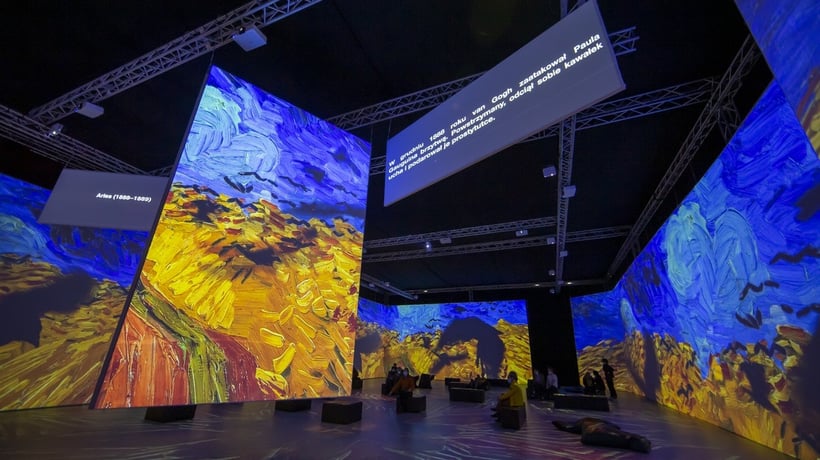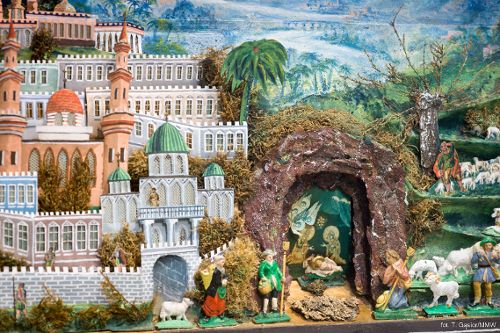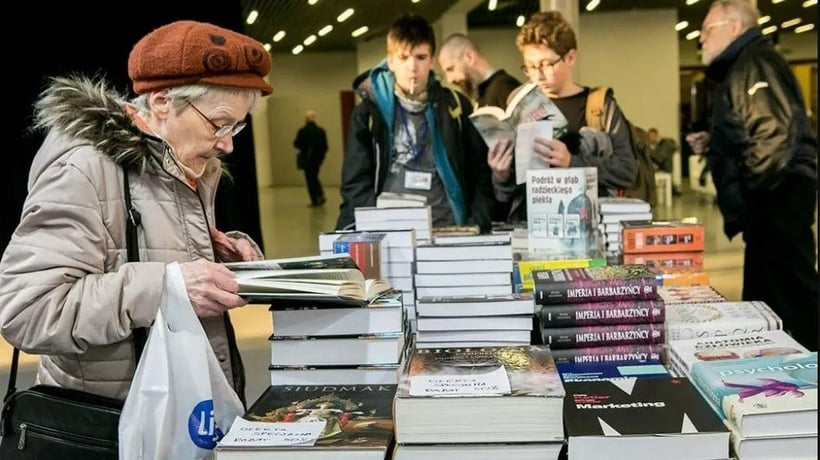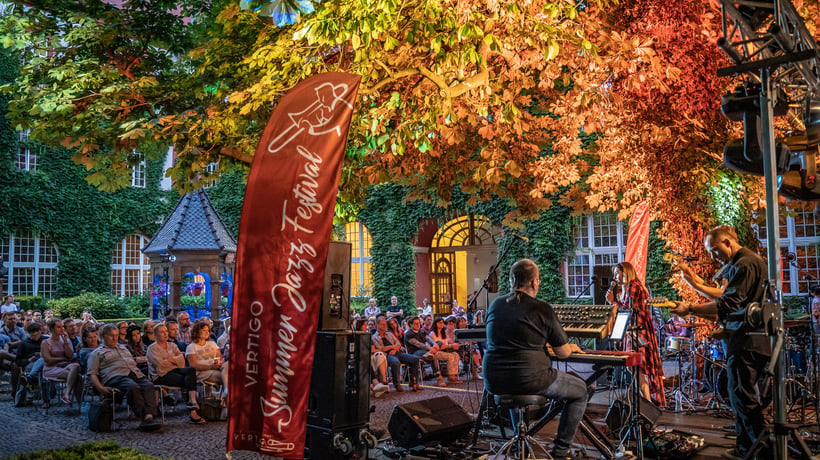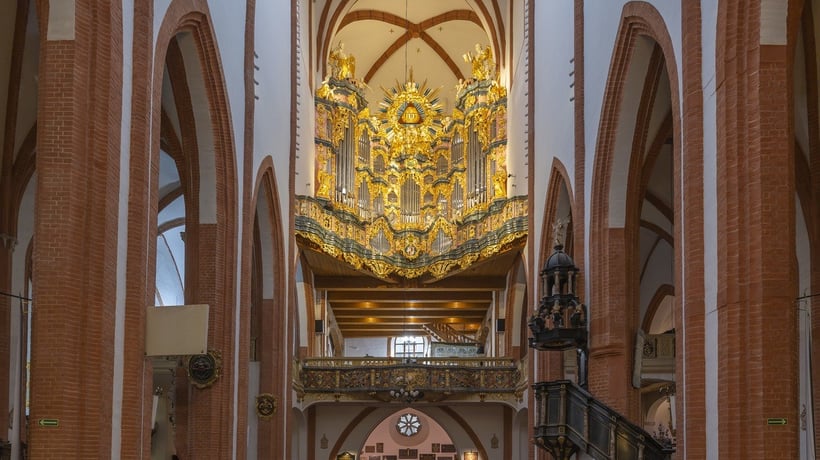Not so long ago, the Four Domes' Pavilion, abandoned by the Wroclaw Film Studio, was gradually falling into ruin. Topped with four domes, the building was designed by German architect Hans Poelzig, who is also known as the creator of the Grand Theatre in Berlin and Poznan's water tower and market hall. The Pavilion was built from 1912-1913. Right from the outset the building was designed as an exhibition space. In 1913 it featured an exhibition celebrating centenary of the victory against Napoleon.
In 2015, the two-year renovation of the Pavilion came to an end. "One of the most beautiful museum spaces was saved from inertia, oblivion and utter decrepitude," said Piotr Oszczanowski, Head of the National Museum in Wroclaw, when the refurbishment came to an end
The cost of the renovation of the Four Domes' Pavilion reached over 84 million 727 thousand PLN. Over 52 million was obtained for the purpose from the European Fund for the Regional Development, and 31 million came from the budget of the Local Government of Lower Silesia. The Museum contributed 600 thousand PLN. The building offers 6.5 thousand sqm of exhibition space. The permanent exhibition "Polish Art in the Second Half of the 20th and in the 21st Century" features a number of celebrated pieces from Wroclaw's National Museum collection, including works by Jan Lebenstein, Alina Szapocznikow, Władysław Hasior and Magdalena Abakanowicz. On display are also installations by Józef Szajna, prints by Józef Gielniak and Józef Panek, etchings by Jan Lebenstein and works by Marek Oberlander, Andrzej Wróblewski, Mieczysław Berman, Zdzisław Beksiński and Jerzy Lewczyński. The National Museum in Wroclaw owns of the largest contemporary Polish art collections dating back to the 1960s. The collection embraces over 20 thousand artworks representing a variety of genres: painting, sculpture, various spacial forms and installations, video art, graphic art and videos depicting performance art shows.
"This is going to be a living exhibition, which changes in sequences, just as contemporary art changes," explains Barbara Banaś, Head of the Museum of Contemporary Art in Wroclaw.
Not to miss. Must sees at the Pavilion. Curators' choices:
Wroclaw's Museum of Contemporary Art TOP 7
1. "Crowd" 1994, Magdalena Abakanowicz
Multiplied human figures, headless, simplified, standing patiently with their legs close together are one of the most celebrated works by Magdalena Abakanowicz. Rough and uneven in texture, they are empty and hollow on the inside. These headless figures are deprived of identity and have no right to speak. They are easy to reproduce, identical, anonymous and devoid of personality. The work offers a poignant insight into the role of the individual in society. As the artist revealed in one of her interviews: "As I explore the human, I actually explore myself () My forms are like skin that I shed at the subsequent stages of my quest. They belong to me and I belong to them so much that we cannot live without each other. I keep watch over their existence."
2. "A Portrait of Michał Choromański", 1930 Stanisław Ignacy Witkiewicz
Michał Choromański, a writer and the author of "Zazdrość i medycyna", a novel particularly celebrated in the 1930s, can barely be recognised in the portrait. As the owner of Portrait Company, Witkacy would make two types of portraits: when completely sober and when under the influence of various psychoactive substances. The portrait of Choromański belongs in the latter category. This can be evidenced by contrasting colours and the distorted features of the sitter that were depicted with tangled lines. The painter brought out the most characteristic of Choromański's physiognomy: his aquiline nose, large lips and distinctive eyes.
3. "Atequam Rumpatur", 1973 Zbigniew Makowski
Makowski is now considered a classic of Polish Surrealism. He creates his paintings with signs and symbolic images. His works feature spherical objects, pyramids, stairs, houses, keys, ladders, numbers, letters, flames and beads hovering in space. "Atequam Rumpatur" is a landscape painting using traditional geometrical perspective. That being said, the objects depicted are hardly related to one another in any logical form. The composition is very much like Surrealist vision. The title alludes to the passage from the Book of Ecclesiastes: "before the silver cord is severed, and the golden bowl is broken". The book offers a philosophical treatise, as it were, on the transience of human life.
4."P-N Mountain", 1987 Józef Hałas
Hałas transforms his painting into an intellectual construct, as it were, in which natural objects become intellectual signs. "P-N Mountain" offers a "landscape synthesis", the crowning achievement of Hałas's explorations in the art of painting. The work offers no study from nature but pure ideas as objects of intellectual contemplation.
5. "Nude", 1972 Jerzy Nowosielski
Nowosielski's painting style and vision was shaped by the time he spent at the Lavra of Saint John the Baptist near Lviv, where he studied the art and history of iconography. His paintings were made in an attempt to transfer the aesthetics of Orthodox Christianity into the realm of contemporary art. "Nude" depicts a female body that transforms into a sign, a framework, as it were, that encloses the abstract background.
6. "Night Shift", 1984 Edward Dwurnik
In the 1980s, Dwurnik achieved recognition by tackling the issues such as manners and society. "Night Shift" belongs in a series devoted to working class. Blue and grey and black in colour, the painting represents the crowd leaving the factory at dawn. The wisps of white appear above their heads. Regardless of the interpretation, the work offers great documentary value. It depicts working class in Communist Poland.
7. "Emballage II An Umbrella and a Human Figure", 1967 Tadeusz Kantor
Kantor used umbrellas in his happenings and theatrical performances. They were also used in his assemblages and emballages, i.e. compositions on canvas that featured worn-out or damaged objects. The human figure is sheltered under an umbrella, which is the symbol of safety, as it were. The umbrella, or a "lower rank object" was elevated by art, wrapped and concealed in the painting.
Artwork descriptions by the courtesy of the National Museum, based on "Przewodnik sztuka współczesna. Muzeum Narodowe we Wrocławiu". Edited by Iwona Gołaj. Wrocław 2012


![Four Domes' Pavilion: must see [TOP 7]](https://www.wroclaw.pl/cdn-cgi/image/w=840,h=480,fit=crop,f=avif/en/files/news/16219/4-kopuly-028.jpg)

